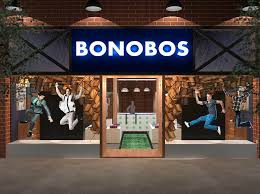Realizing Growth Through the Potential of e-Commerce

A vertically integrated retail store in the e-commerce era, Bonobos has successfully created a product line and a service experience that their customers value.
Bonobos is an online retailer that was founded in 2007 to address a perceived gap in the men’s retail clothing sector – specifically the fit of men’s casual pants. From the company’s inception, they have carefully and effectively aligned their business model with their operating model in order to penetrate the men’s clothing industry. With the stated mission of becoming a vertically integrated retail store in the e-commerce era, Bonobos has successfully created a product line and a service experience that their customers value, and executed on this model through a hybrid of online and brick and mortar store fronts (Business of Fashion, 2013).

[Andy Dunn, Co-Founder and Chief Executive of Bonobos]
Bonobos’ business model has been to create clothing that fits their customers and deliver this clothing in a hassle free and time conscious manner. Co-founders Andy Dunn and Brian Spaly had two important observations about their customers’ behavior in the men’s retail clothing industry that led them to this model:
- A trend toward more tailored, slimmer fitting clothing that reduced excess material.
- The purchasing behavior of men, particularly millennial men (ages 18-34), which was skewed toward e-commerce and the hassle free experience which it offered.
[Lightspeed Venture Partners]
Bonobos built an effective operating model that capitalized on these insights by delivering their products through their online store and physical Guideshops, while simultaneously leveraging customer service representatives, termed “ninjas” to ensure a superior consumer experience. The success of this model was predicated on realizing growth through the potential of e-commerce, while securing margins through brand equity (Chen, n.d.).
By not burdening themselves with the traditional brick and mortar store fronts, Bonobos was able to scale more quickly and focus on their product line, as well as customer acquisition. In the traditional retail model, companies were forced to balance the use of their employees’ time between serving the customer and operating the store – namely managing and displaying the inventory (Chen, n.d.). Typically this equation results in either higher labor costs or reduced customer satisfaction. Additionally, careful management of where and when to open new stores could be a cumbersome task for any retail clothing business, but arguably most potently for a new business. The capital intensive nature of operating a traditional store front, as well as the logistical challenges with adequately supplying it (inventory management), can stretch the managerial capabilities of any entrepreneur, and force their focus to stray from product innovation. Bonobos avoided this path, and instead focused on the first component of their business model – namely creating clothing that fit and that their customers valued. They’ve since expanded their product line which now includes everything from active wear to suits and most things in between (Bonobos, n.d.).
Bonobos decision to open a limited number of physical locations where customers could make an appointment to visit and try on clothing before purchasing marked an important decision point for their continued growth (Thau, 2015). By pursuing this strategy, they stayed true to the second component of their business model – a hassle free shopping experience. Although their targeted customers may not want to purchase clothing through the traditional channels, there were obvious benefits to being able to physically experience the clothing before making a purchase decision. The online shopping experience is prone to customers ordering incorrect sizes, which leads to delayed order fulfillment as customers are forced to return products and reorder in the appropriate sizes. This runs counter to Bonobos’s model, and the introduction of Guideshops was an innovative solution that allowed its customers to try on clothing before purchasing without forcing these shops to carry inventory for sale – there was only enough inventory to allow customers to experience the full product line in varying sizes. Bonobos’s decision to create Guideshops further demonstrated the alignment between their business model and operating model.
[Bonobos Guideshop]
The ultimate success of Bonobos is still unclear. They are certainly not immune to the challenges of navigating through a series of fundraising events and meeting lofty expectations set by optimistic valuations. Continuing to design and produce clothing that their customers want, while innovating along distribution channels and effectively managing inventory will present ongoing challenges for Bonobos as it does most clothing retailers. The pressures to scale and cross the threshold to profitability will remain daunting, but at least for now, they’ve maintained alignment between their business and operating models.
References
Bonobos. (n.d.). Bonobos. Retrieved from Bonobos.com: https://bonobos.com/
Chen, J. (n.d.). Joy Chen of Strategy. Retrieved from http://cargocollective.com/joychen/Reinventing-Retail-A-Bonobos-Case-Study
KANSARA, V. A. (2013, July 19). Business of Fashion. Retrieved from http://www.businessoffashion.com/articles/founder-stories/founder-stories-andy-dunn-on-building-the-giorgio-armani-of-the-e-commerce-era
Thau, B. (2015, July 8). Forbes. Retrieved from Forbes.com: http://www.forbes.com/sites/barbarathau/2015/07/08/bonobos/





Love Bonobos – such a great concept. They target the needs of their customer very well. I wonder how much upside they are truly seeing from their Guideshops though. I believe their original inspiration was correct – that most men would prefer not to shop in brick & mortar, so I would be interested in seeing whether they are acquiring new customers in their guideshops or whether it only appeals to their most loyal customers. I’m also curious about how much they will expand the Guideshop model, and at what point does the capex outweigh the benefits? Great post!
Great concept. My first question would have been how does bonobos mitigate the higher probability of returns (given their product), the guideshops seem to be a great partial-solution, I assume shoppers who prefer shopping from the comfort of their couch would not necessarily be too excited to head to a bonobos store for measurements. I wonder if there was an easier way to do this, like provide some sort of sizing kit with a customer’s first order?